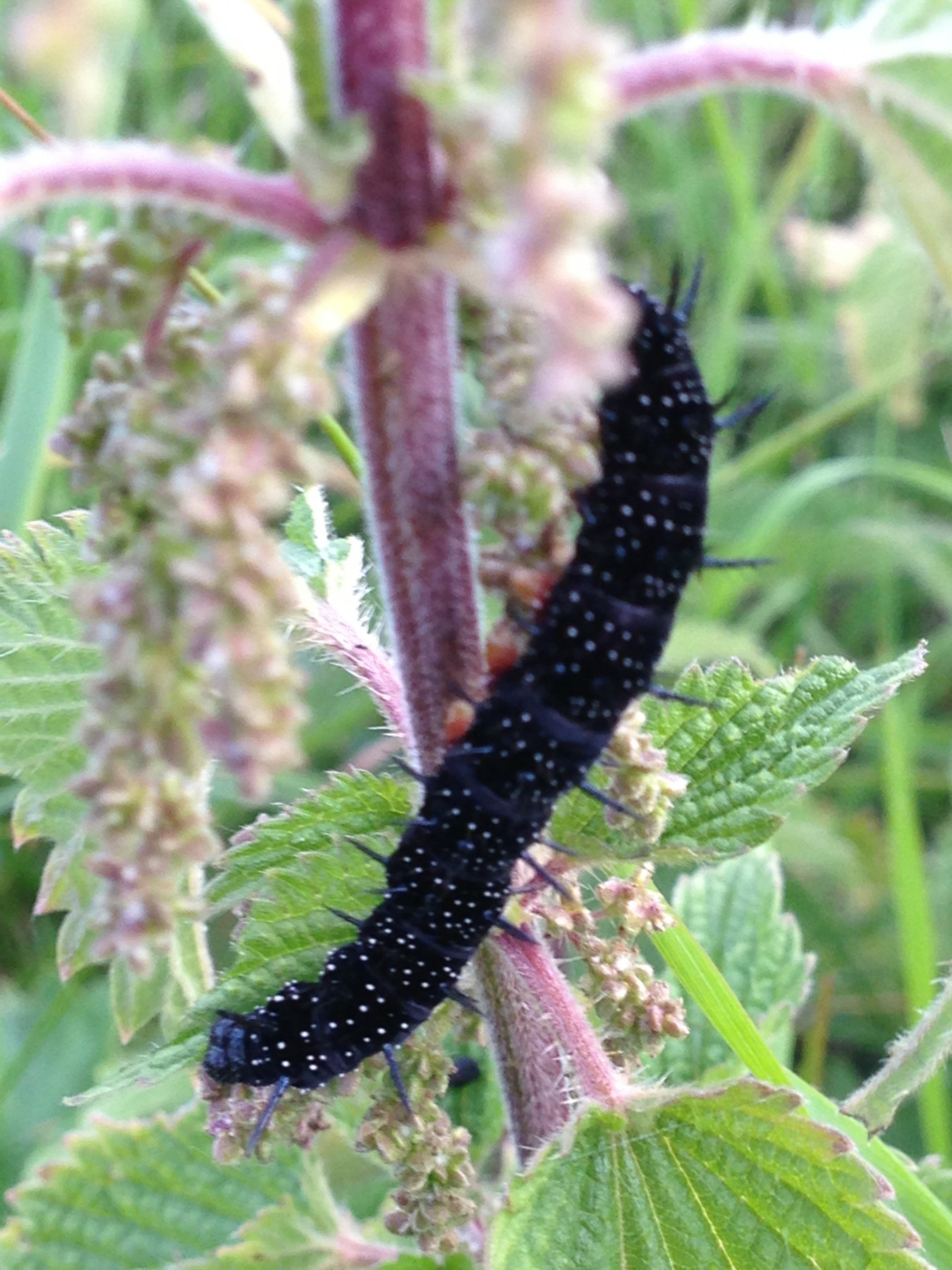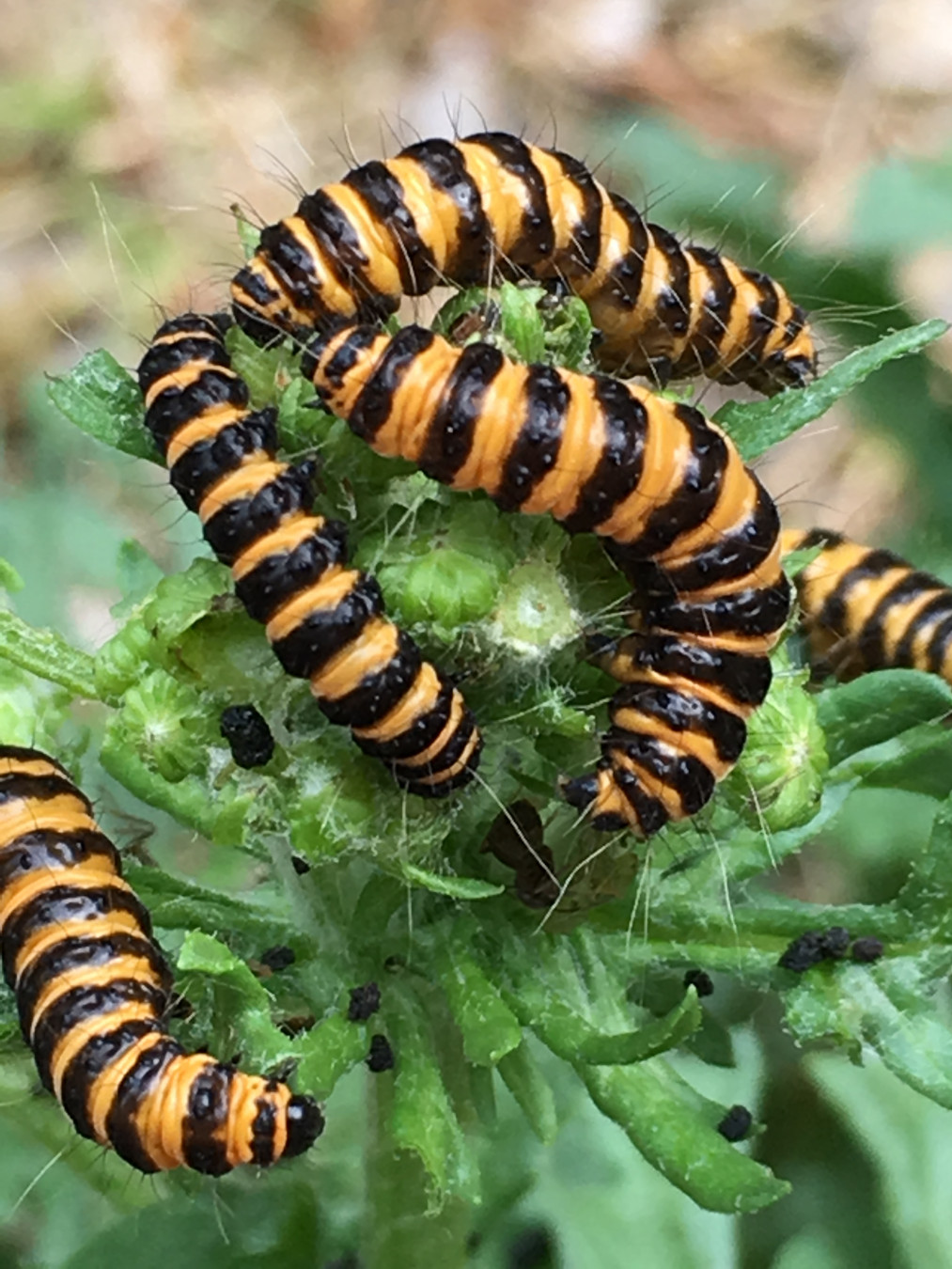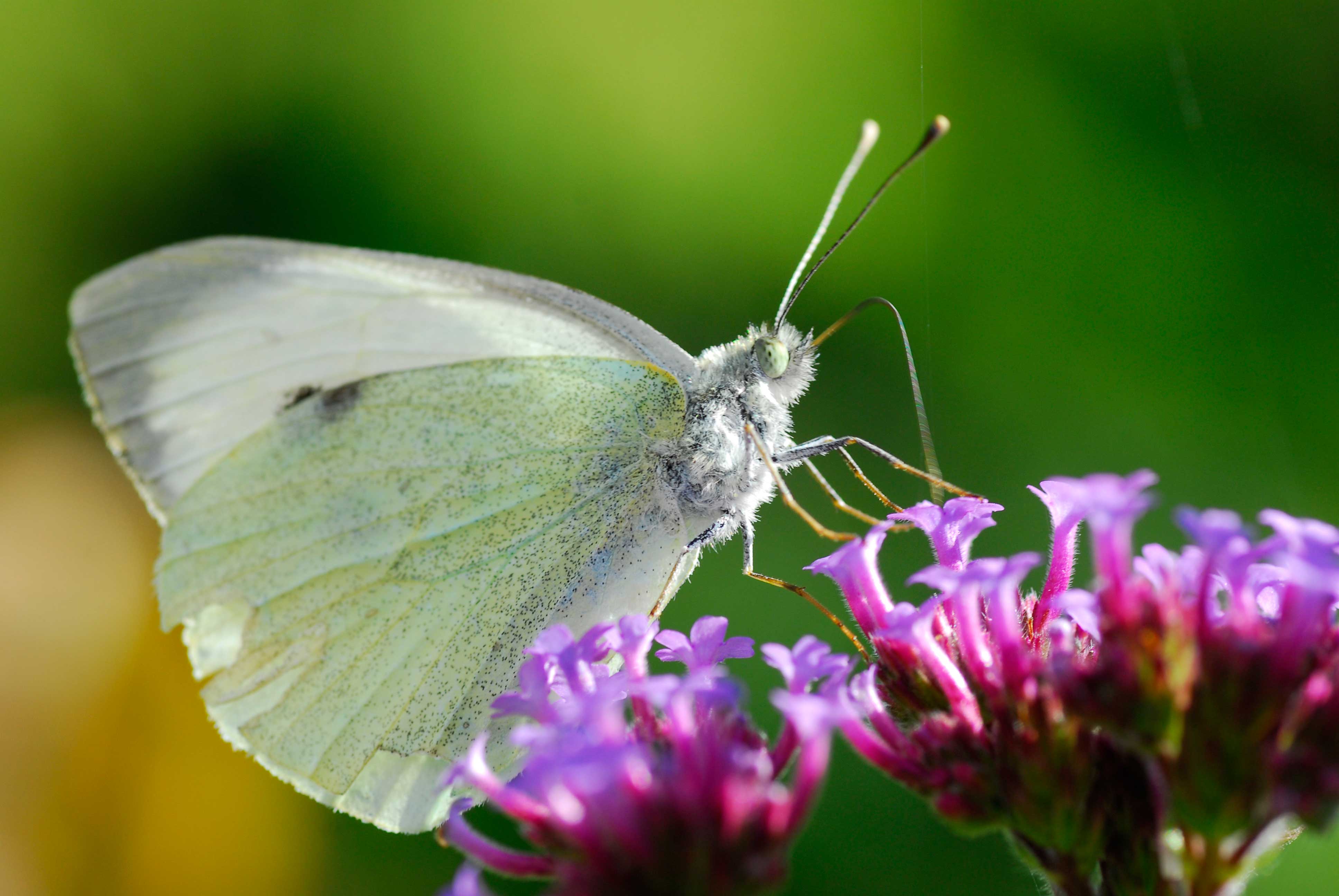
Caterpillars get a bad press, especially with gardeners. But if you placed a butterfly in front of a gardener and told them to kill it, would they or could they? Well …. I hope not
It’s time to fall in love with caterpillars. But first you need to understand a bit about them. Caterpillars are the larval (toddler) stage of butterflies and moths. There are a few other creatures that have a caterpillar-like stage, but the majority of the caterpillars you might find in your garden will be the ugly duckling precursor to our beautiful butterflies and moths.
Specific diet
The first amazing thing about butterflies and moths is that they taste through their feet. They know that their eggs and larvae need very specific food plants, so they land on plants that look like their larval food plant and check whether it is suitable through their feet. Different species need different plants.
That means that if you have caterpillars on your kale, they won’t eat your roses or move around the garden eating other different plants. Yes they might decimate your kale but it will recover and grow back. And there are things that you can do to limit the damage without impacting on the natural balance.
Food for wildlife

Caterpillars are part of the food chain. That means they are essential food for other creatures. In nesting season a blue tit chick needs around 100 caterpillars a day. Each nest can contain up to ten chicks, which means that the parents need to find hundreds of caterpillars daily. So if you spray for caterpillars you deprive something of vital food. And of course if you kill the caterpillars then the adult butterflies and moths will not be present in your garden. Butterflies and moths are important plant pollinators and they are all part of the entwined, integrated and entangled web of life. If you interfere with the natural balance it can have a devastating effect on the wildlife and the overall biodiversity in your garden and beyond. It’s the ripple effect and every action we take has a knock on effect well beyond our boundaries. Stand back and let nature take its course. Caterpillars eat leaves and foliage, but they rarely kill a plant, if you are worried about your plants then keep them well fed and watered to give them everything that they need to grow back strongly. Sometimes a plant that has been cut to the ground by caterpillars will grow back bigger and better than ever before. In my garden the mullein moth caterpillar often feeds voraciously on my verbascum plants but they grow back stronger and flower a bit later and have never died off, plus the caterpillars are truly spectacular.
Damage limitation
Very few of our caterpillar species can be regarded as pests, but those that are can be controlled using plant husbandry techniques rather than toxic chemicals. Let’s use the cabbage white butterfly caterpillars as an example. These if left to run rampant can and will turn your frilly kale and other members of the cabbage (brassica) family into holey doilies. In a small garden that could deprive you of your crop, but you can limit the damage by planting bait plants nearby for the butterflies to lay their eggs on.

You might plant some thinnings of your cabbage seedlings to mature in the corner of the garden for food, or a clump of nasturtiums to tempt the females to lay their eggs elsewhere. You can also loosely cover your kale with garden fleece to prevent egg-laying females landing there. But there are other ways to deter some garden ‘pests’. Companion planting is a useful technique of growing strongly scented plants alongside the plants you wish to protect. Some of the companion plants actually repel the ‘pests’ while others disguise or camouflage your prize plants with their scent. So you can grow garlic and onions along side your kale or interplant with strongly scented herbs like rosemary, sage and dill to reduce their attractiveness to the egg laying adult butterflies. There are good companion plants for many of our food crops that are affected by caterpillars and there are some good guides online.
Fall in love with nature
Of course the best thing to do is to fall in love with nature and consider these amazing creatures as a lesson in life, a blessing and a great way to inform and educate others, especially children. Caterpillars, butterflies and moths all have their place in the garden. You wouldn’t want to be without the ethereal butterflies that grace our gardens and many of these are in decline and need our gardens for food, shelter and breeding sites. Many feed on native plants that we regard as weeds like the nettles, and without a stand of nettles growing in the sun they would die out. These sparkly black caterpillars are the larval stage of our beautiful peacock butterflies. Other creatures like ladybirds lay their eggs on nettles too. I’m not suggesting every garden has room for a nettle patch, but just understanding that nettles are part of the lifecycle of many precious pollinators and creatures is a huge start.


